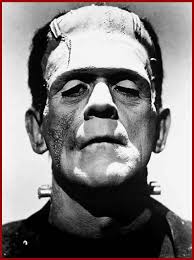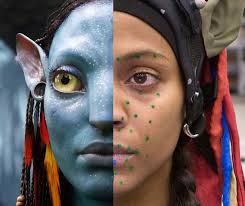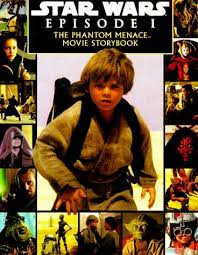Special effects makeup is a very important art form in the movie  industry that started in the 1900’s (sreevesg). It allows regular people to become extraordinary things like Frankenstein or a werewolf. Originally the most common items used in special effects makeup were collodion, mortician’s wax, putty, and spirit gum.
industry that started in the 1900’s (sreevesg). It allows regular people to become extraordinary things like Frankenstein or a werewolf. Originally the most common items used in special effects makeup were collodion, mortician’s wax, putty, and spirit gum.
In the beginning when films were still shot in only black and white the makeup artists would have to get creative with the colors they chose because of how they would show up on screen. For instance, Jack Pierce, a famous special effects makeup artist that took part in Frankenstein and Dracula, had to use green paint on the actors face playing Dracula in order for him to look pale and ghostly on film.
Jack Pierce said that “The sole reason for any makeup, and particularly a character makeup, is not to proclaim the skill of the artist or the actor, but to help tell the story. Therefore, makeup must not be obviously ‘makeuppy.’ This in turn demands that it be supervised by a qualified artist, for the actor, no matter how skilled he may be in the technical detail of applying his makeup, rarely has the right perspective to judge the makeup without bias” (sreevesg). Oftentimes special effects makeup can take a very long time due to the level of care and precision it requires. For example, when Jack Pierce created Frankenstein he had to first research medical books to ensure that his end product was anatomically correct. The look took 6 hours to create each time and afterward it would take an hour and a half just to remove (sreevesg).
Since Frankenstein’s time there have been drastic improvements to both makeup and the techniques used in special effects. For instance, “Improvements in the technical quality of film and television electronics have led to new shades of facial coloration in a very naturalistic sense for both men and women, even off the set” (Kehoe).
The art of special effects makeup is starting to take a decline as  CGI technology advances. CGI stands for Computer-Generated Imagery and it allows filmers to digitally create something as big as an entire scene or something as small as removing an imperfection from an actors face (QZ). CGI has been used in films to edit the appearance of actors by making them look younger, altering their body to make them look thinner, or even adding artificial tears to their face (QZ).
CGI technology advances. CGI stands for Computer-Generated Imagery and it allows filmers to digitally create something as big as an entire scene or something as small as removing an imperfection from an actors face (QZ). CGI has been used in films to edit the appearance of actors by making them look younger, altering their body to make them look thinner, or even adding artificial tears to their face (QZ).
The creation of digital enhancement and editing has placed a  hardship on special effects makeup artists as they aren’t really needed anymore. It also doesn’t help that special effects makeup takes a long time to be applied and can be easily messed up while shooting. In a documentary, Life After Pi, they stated that between 2003 and 2013 a lot of visual effects companies were forced to file for bankruptcy (QZ). While it does seem like CGI is something that could completely erase the need for these talented artists there are still reasons to hold out. For example, In Star Wars: Episode I — The Phantom Menace there were a lot of complaints that the movie was too “cartoony” looking due to the overuse of CGI. This has lead to most studios using a blend of both special effects makeup and CGI. However, with the fact that technology is constantly advancing and becoming cheaper there may come a time where special effects makeup artists are a thing of the past.
hardship on special effects makeup artists as they aren’t really needed anymore. It also doesn’t help that special effects makeup takes a long time to be applied and can be easily messed up while shooting. In a documentary, Life After Pi, they stated that between 2003 and 2013 a lot of visual effects companies were forced to file for bankruptcy (QZ). While it does seem like CGI is something that could completely erase the need for these talented artists there are still reasons to hold out. For example, In Star Wars: Episode I — The Phantom Menace there were a lot of complaints that the movie was too “cartoony” looking due to the overuse of CGI. This has lead to most studios using a blend of both special effects makeup and CGI. However, with the fact that technology is constantly advancing and becoming cheaper there may come a time where special effects makeup artists are a thing of the past.

Hi Kimberly:
This is such a nice post! It offers us some good ways to see how makeup especially specific effects makeup occupies a big part in film. It’s also interesting to see how CGI makes special effects makeup so incredible and easy in front of the audience, such as in the film Avatar. This is a good example!